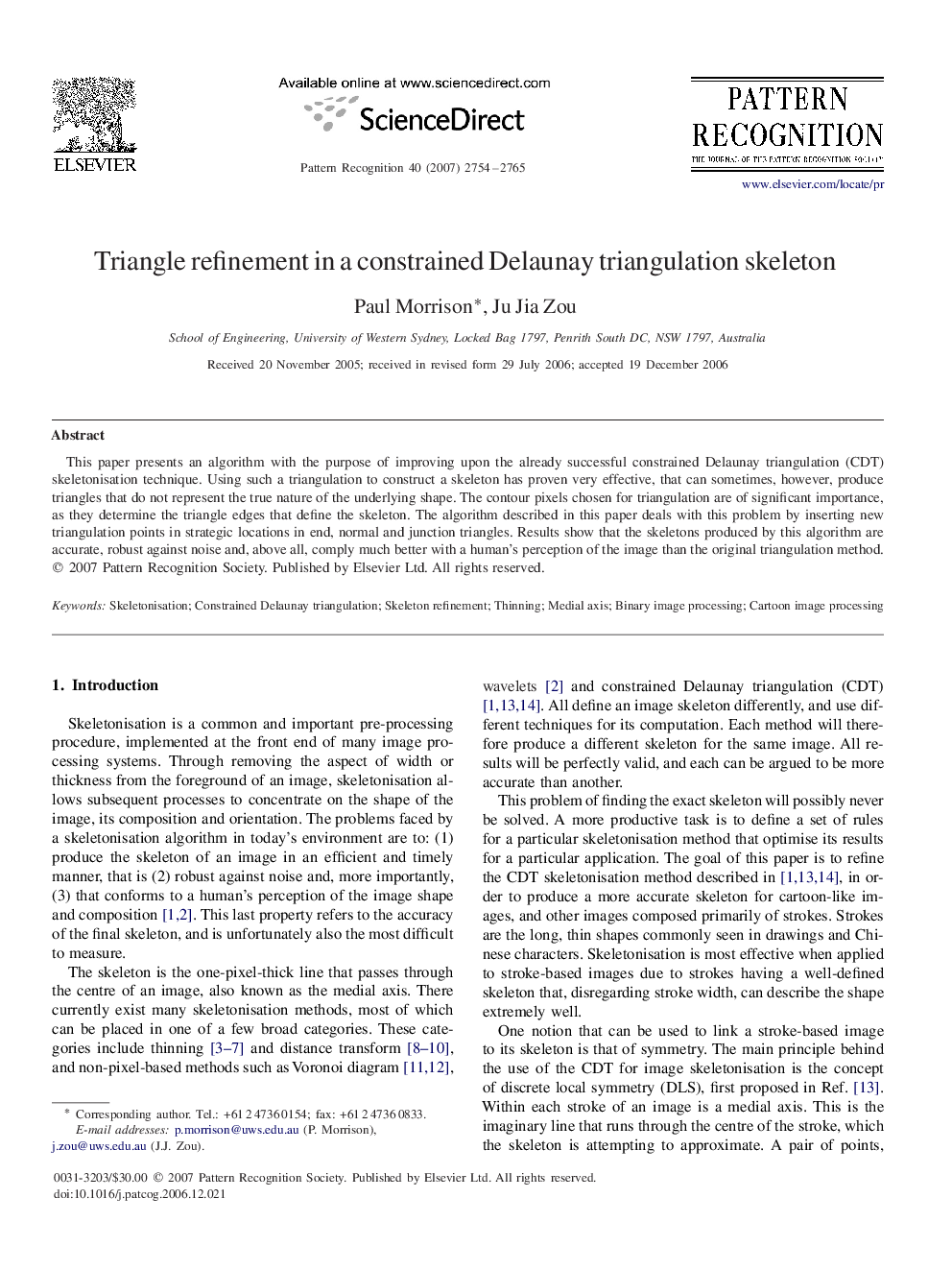| Article ID | Journal | Published Year | Pages | File Type |
|---|---|---|---|---|
| 532866 | Pattern Recognition | 2007 | 12 Pages |
This paper presents an algorithm with the purpose of improving upon the already successful constrained Delaunay triangulation (CDT) skeletonisation technique. Using such a triangulation to construct a skeleton has proven very effective, that can sometimes, however, produce triangles that do not represent the true nature of the underlying shape. The contour pixels chosen for triangulation are of significant importance, as they determine the triangle edges that define the skeleton. The algorithm described in this paper deals with this problem by inserting new triangulation points in strategic locations in end, normal and junction triangles. Results show that the skeletons produced by this algorithm are accurate, robust against noise and, above all, comply much better with a human's perception of the image than the original triangulation method.
